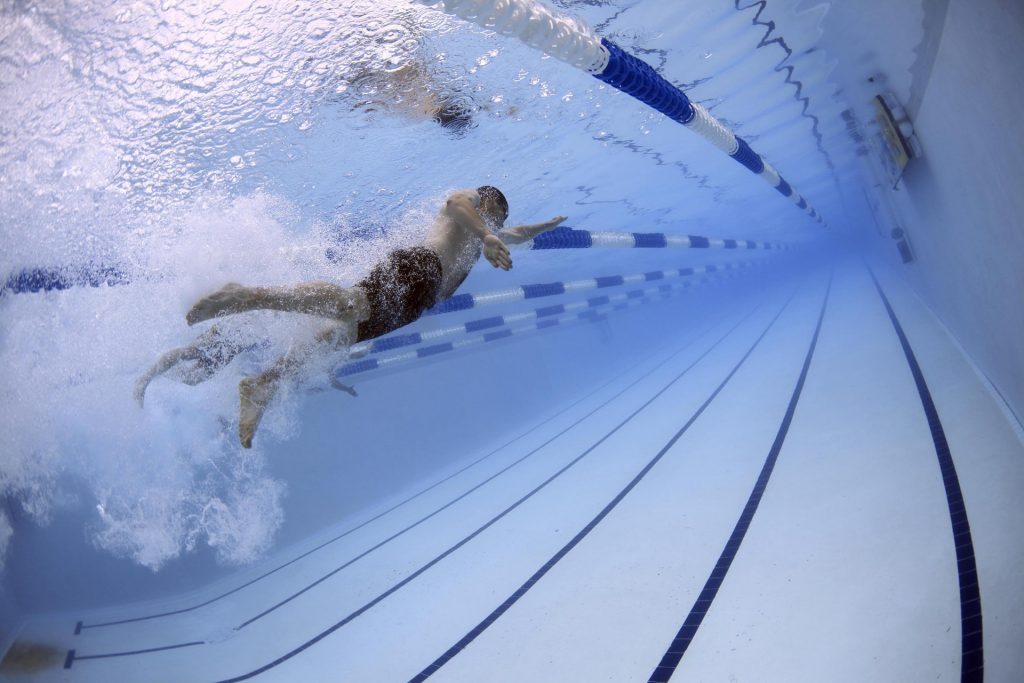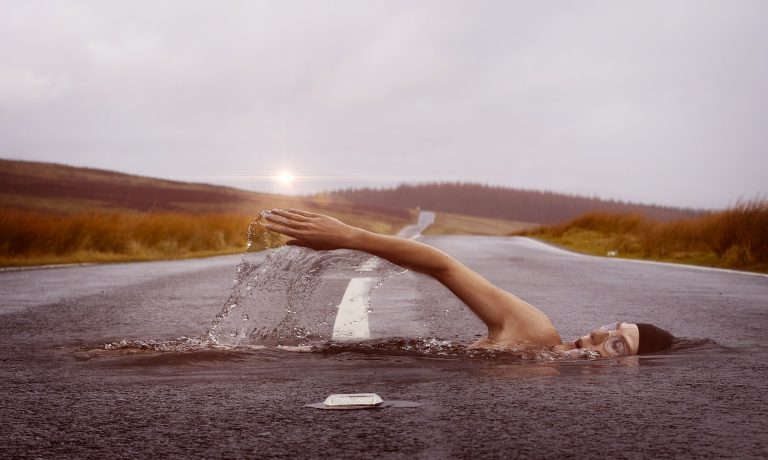What does it feel like to go swimming in Iceland from the perspective of an agender person? Viima Lampinen reports.
Moving to Iceland has changed my life in a way I didn’t think was possible: I’ve started swimming. After not swimming for decades and having anxiety over going to the swimming pools because of the other people and their reactions to me: I’ve started to like swimming. All I needed to do was search for a swimsuit that would make me feel less uncomfortable having just one layer of fabric covering a part of my body and fall in love with an Icelandic person who would be the reason to move to Iceland.
The day when I got my swimsuit in the mail was groundbreaking. I tried it on and it fit me perfectly, applied pressure in just the right spots, was just long enough to not look like a women’s swimsuit. It gave me a superhero feeling inside. My posture straightened. I was no longer hunching over because of the gendered tissue formation that appeared years ago on my chest, causing some people around me to assume my gender completely wrong.
“As an agender person, I have felt the full impact of the gender norms in society, which make it clear that being agender is unwanted.”
The thing is, I am not a woman. Nor do I want to remove the tissue formed, because it is a part of my body and there isn’t really anything wrong with my body. There is no infection to cut out, there is just skin and some tissue underneath. What I wish to change are other people’s assumptions that I must be a woman, because they directly affect how I am spoken to, how I am seen. It is as if my name was Rowan, but everyone kept acting like my name was Chris or Dana because “Chris” or “Dana” was tattooed on my forehead. The way I’m labeled by people and legally categorized by society is not only wrong. It not only refuses to recognize my existence, but forces me to make a choice between staying in the false gender category I was guessed and given at birth (F) or changing it to the other wrong option (M).
As an agender person, I have felt the full impact of the gender norms in society, which make it clear that being agender is unwanted. Ultimately, I’ve learned to live with the constant microaggressions and verbal abuse, shouting on the street, mocking in a bathroom queue, threats on my life the police never investigated fully because the volume of hate speech towards gender minorities is so massive that they do not have the resources to investigate every case. Sometimes I’ve even had to save myself from the immediate threat of violence on a city street. I’ve also made the personal choice of somewhat accepting my body, and I’ve declared to myself and to my body and people asking inappropriate questions, that no, I do not want to alter my body surgically. Sure, in a way life was a lot easier when my appearance was more androgynous – when I was slimmer and was mistaken for as an M as well as an F (or sometimes just stared at). It was easier for me because as an agender person I do not have a gender. All genders are equally wrong.

At the moment I get most often mistaken for a woman. That bothers me a lot, because the assumption makes me feel like I am in disguise to the world. Every time I do not help the person assuming my gender, I feel like I am responsible for their mistake, I feel like my body is lying to the world. But it’s a lie I am not responsible for. I am not lying. My body has just become more gendered, it’s become more stereotypical, so based on their assumptions, people lie my gender to themselves to adjust their attitudes and ways of addressing me. And these wrong assumptions hurt me, because it means that I am not really seen as myself in the eyes of the people I meet. This all comes to a boiling point at the public swimming pools. Gendering starts when the cashier starts speaking. Then it would be the gendered changing rooms. The people and their eyes staring or accepting me as belonging to some gender I do not belong to. The people in the pools possibly talking to me using gendered language.
Add to this the fear of water originating in childhood and you’ve got an agender person who never goes swimming. Until they came to Iceland.
My partner is very familiar with the facilities, so going to the pool with her was easy. I just needed to cope with my anxiety and follow after her. We entered the building and she asked for a key to the multi-purpose changing room. Then we went there. There weren’t any instructions in the changing room, but she acted as the perfect pool etiquette guide and told me in advance what we would do and where so in no time I was marching towards a warm shallow pool in my brand new swimsuit and not feeling sad, scared or overly conscious of my own body. After a while she decided to go swim laps and asked me to join. At first I said no, but after being told my feet would reach the bottom I decided to go keep her company by the side of the pool. But then after a minute I wanted to try swimming a few meters. And it felt wonderful. The warm water enclosed me into a gentle hug. Knowing I could stand up at any given time, I wasn’t petrified of the element I was immersed in. My body didn’t tense up so much my neck hurt, and I was able to somewhat relax in the water. So I kept going. I was finally swimming in the sense that you could call it swimming. I swam all the way to the other end, and then back again, and again, and again. When I got out of the pool, I had swum a total of 250 meters for the first time in my life.
The only thing shadowing my experience was being wary of kissing my partner. Just a few days earlier I had heard of a discrimination case of two women being asked to leave a swimming pool somewhere in Iceland, because it had “bothered the other swimmers”. That is homophobia. And if I was seen as a woman by the other swimmers and we were seen as a same-sex couple, I would not want this wonderful, sunny and joyous day at the pool to be stained with a possible fight over our rights to stay at the pool.
“Making pools accessible to people of all abilities and providing changing rooms for trans and non-binary bodies if the owners of the bodies wish to use on is providing people with not only nondiscrimination in services but also giving marginalized people support.”
Afterwards my body felt a little heavy all over and some unfamiliar muscles ached a little from the exercise. I felt great. And a few days after that we went to the pool again, this time with our friends, who happen to be trans. It was once again wonderful to just enjoy the water and have fun while exercising. As we were leaving my partner and I had a short conversation.
She said: “One of the things I love about the swimming pools is seeing so many old people, with old bodies that have been lived in for seventy, eighty, ninety years, exercising and taking care of themselves. Can that be us when we grow old?”
– Yeah, that can be us now.
Water as an element is very special, and exercising in water has benefits that cannot be denied. Making pools accessible to people of all abilities and providing changing rooms for trans and non-binary bodies if the owners of the bodies wish to use on is providing people with not only nondiscrimination in services but also giving marginalized people support. It is not just recognizing that non-binary people exist, but also giving us tools to take good care of our bodies and minds, our wellbeing. My deepest, warmest thanks to the pools in Reykjavík and Seltjarnarnes for making swimming possible even for an agender person who is still terrified of water. Fighting a battle with oneself is tough enough. Discrimination not only harms people as individuals but ultimately creates more expenses for the society. I urge every municipality to put people’s wellbeing and health first, no matter what their body or gender are. Ensure everyone is welcome and safe from discrimination in your sports facilities, especially your swimming pools.
I can’t wait to go swimming again.


